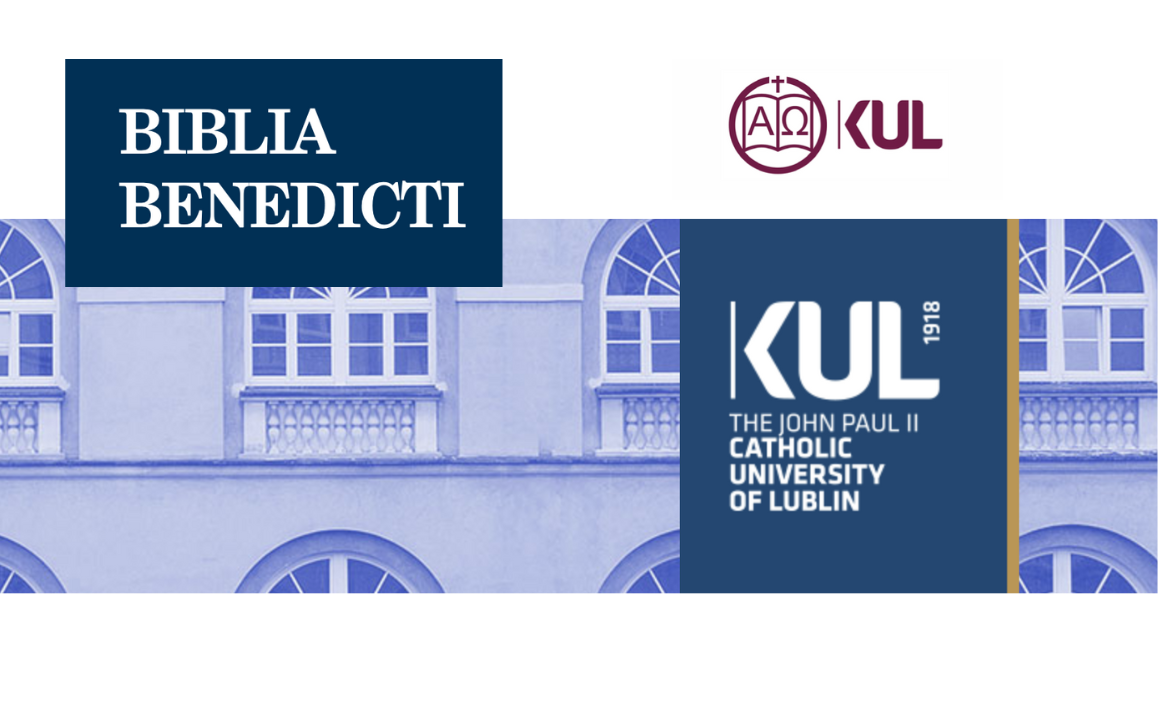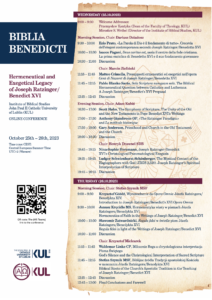On 25 and 26 October, the Institute of Biblical Studies at the John Paul II Catholic University of Lublin, held its annual conference, Biblia Benedicti.
This international colloquium, organised by Adam Kubiś, a former doctoral student at ÉBAF, focused on the hermeneutical and exegetical legacy of Joseph Ratzinger, with the central aim of bringing exegesis and theology closer together, an ambition shared by the ÉBAF. Brother Anthony Giambrone, op, a number of former doctoral students and friends of ÉBAF, such as Gary Anderson, Ludger Schwienhorst-Schönberger and Henryk Drawnel, were among the speakers at this meeting, which was opened by the director of the Institute of Biblical Studies at the University of Lublin, Mirosław S. Wróbel, who himself completed his doctorate at ÉBAF.
Cardinal Ratzinger’s biblical theology is based on the distinction between revelation and Scripture: Christ fulfils revelation, and Scripture is the privileged witness to revelation. Reading the Scriptures is not enough to access revelation, which cannot do without an exegesis that is suitable to revelation. All his life, Joseph Ratzinger wanted to practice an exegesis adapted to revelation, as proposed by the Council in the constitution Dei Verbum, paragraph 12. On the one hand, it must be historical-critical and, on the other, theological. Secondly, it is organised around three hermeneutical criteria, the unity of Scripture, tradition and the analogy of faith. Matteo Crimella, a doctoral student at the School in 2009, analysed the practice of these criteria and the challenges they pose in Ratzinger’s Jesus of Nazareth trilogy.
The criterion of the unity of the Scriptures lies at the heart of the Christology of the Church Fathers, according to Ratzinger. For him, without unity between the Old and New Testaments, theology lacks its foundation. He therefore launched a strong appeal to rediscover the Christological reading of the Old Testament, which was the subject of the presentation by Nina Heereman, a former doctoral student at Ébaf (2017). With Saint Paul (2 Co 30, 4-18), she recalled in particular that the whole theology of the nascent Church was founded on a pneumatological hermeneutical reading of the Old Testament: “Saint Paul makes us understand that the spirit of the risen Lord gives us the profound meaning of the Old Testament“.
As for the theological reading of tradition, the famous American exegete and convert Scott Hahn has shown that the liturgy is the primordial place of Sacred Scripture. In the Eucharist, where Christians consume the body of Christ, the Word is fulfilled.
Finally, for revelation to be, it needs a receiver. With Ratzinger, the subject of revelation becomes the one who transmits it. Thus, the Church participates in revelation. This raises the question of inspiration. Brother Anthony Giambrone, op, addressed this difficult question. By referring to Saint Thomas and the Middle Ages, he was able to demonstrate that Ratzinger’s notion of inspiration, which includes the subject, should not, as is often claimed, be attributed solely to Saint Bonaventure, but that it has deep roots in medieval theology and is also present in Father Benedict’s late writings on inspiration. Ludger Schwienhorst-Schönberger outlined the conditions for the passage from dead letter to inspiration in the reader’s heart, that are the practice of faith and the sacraments, silence and prayer.

